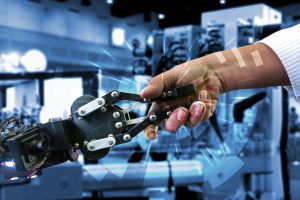Artificial Intelligence (AI) is no longer a futuristic concept. As we move into 2024, it has become an integral part of various industries, revolutionizing how we live, work, and interact. From increasing productivity to reshaping entire business models, AI’s adoption is surging globally. In this article, we will explore the top AI statistics, AI adoption trends, its workforce and employment impacts, and business impacts, focusing on benefits, examples, and case studies.
Top AI Statistics and Market Growth
One of the most remarkable statistics is the AI market size, which is projected to grow from $214 billion in 2024 to a staggering $1,339 billion by 2030. This immense growth highlights how rapidly AI technologies are advancing. For example, businesses across sectors are adopting AI-driven solutions for tasks ranging from customer service automation to supply chain management.
AI will also significantly impact national economies. In the United States, AI is expected to contribute a 21% net increase to GDP by 2030. This showcases AI’s economic value, further emphasizing its role as a growth driver in the upcoming years.
AI Adoption Trends in 2024

AI adoption trends and statistics for 2024 reveal that a growing number of businesses are integrating AI into their operations. Nearly 72% of businesses have adopted AI for at least one business function. The key sectors benefiting from AI adoption are healthcare, finance, and retail, where businesses are using AI to optimize everything from patient diagnostics to fraud detection and inventory management.
One of the most significant examples of AI adoption is in voice search technology. In the U.S., 50% of mobile users use voice search daily, interacting with AI-powered assistants like Siri and Google Assistant. This illustrates AI’s growing influence on everyday tasks, improving convenience and accessibility.
Case Study: India Leading AI Adoption India holds the highest AI adoption rate at 59% among businesses, followed closely by the United Arab Emirates at 58%. The high adoption rates in these countries showcase their commitment to staying competitive in an AI-driven global economy. India’s leadership in AI adoption is a testament to its focus on technology-enabled growth, particularly in sectors like IT and e-commerce.
Workforce and Employment Impacts of AI
While AI offers immense benefits, it also raises concerns about its impact on the workforce. According to recent AI workforce statistics, 77% of people are concerned about AI causing job losses within the next year. This fear is not unfounded. Studies predict that 400 million workers could be displaced globally by AI by 2030, particularly in industries like manufacturing, logistics, and retail.
However, it’s important to note that while AI may automate routine tasks, it can also create new job opportunities in fields like AI development, data science, and machine learning. This transition will require a workforce skilled in AI technologies, leading to a shift in the types of jobs available.
Case Study: Healthcare Industry and AI’s Workforce Impact The healthcare industry is one of the sectors most affected by AI adoption. It is expected that 40% of healthcare jobs will be impacted by AI, with tasks like diagnostics and treatment planning increasingly relying on AI-powered tools. However, this has also led to new roles, such as AI specialists and data analysts, who ensure these technologies are used effectively and ethically.
AI Business Impacts: Productivity, Customer Relationships, and Challenges

The impact of AI on businesses is multifaceted, with benefits spanning across increased productivity, improved customer relationships, and process optimization. In 2024, 64% of businesses expect AI to increase productivity, and 60% believe AI will improve customer relationships. AI’s ability to streamline processes, such as automating repetitive tasks and providing personalized customer service, contributes to these positive business outcomes.
For example, AI-powered chatbots are widely used to handle customer inquiries, allowing businesses to provide instant responses and resolve issues efficiently. This not only enhances customer satisfaction but also frees up human resources for more complex tasks.
Case Study: ChatGPT’s Impact on Business Productivity A notable example of AI enhancing business productivity is ChatGPT, an AI language model that gained 1 million users within five days of its release. Businesses have embraced ChatGPT to generate content, respond to customer queries, and even assist with data analysis. According to a Forbes Advisor survey, 97% of business owners believe that ChatGPT will help their businesses, with many using it to create website content and generate insights.
Benefits of AI in Business:
- Increased Efficiency: AI can automate repetitive tasks like data entry, freeing up employees to focus on strategic work.
- Better Decision-Making: AI can analyze large datasets to provide actionable insights, helping businesses make informed decisions.
- Enhanced Customer Service: AI chatbots and virtual assistants offer 24/7 customer support, improving customer satisfaction.
- Cost Savings: AI-driven automation can reduce operational costs by minimizing errors and improving process efficiency.
Addressing Consumer Trust and AI User Sentiment
While businesses are reaping the benefits of AI, AI trust and user sentiment remain major concerns. Over 75% of consumers express concerns about AI spreading misinformation. As AI becomes more embedded in business operations, companies must address these concerns by implementing transparent and responsible AI practices.
Interestingly, despite these concerns, 65% of consumers still trust businesses that use AI. When companies are transparent about how they use AI and emphasize ethical considerations, they can build consumer confidence and foster loyalty. For instance, AI’s ability to personalize customer experiences while protecting user privacy can boost trust in AI-powered services.
Case Study: AI Trust in Financial Services In the financial sector, AI plays a pivotal role in fraud detection, credit scoring, and customer service. Yet, trust remains a critical issue. To address this, financial institutions use AI responsibly by implementing strict data privacy protocols and emphasizing the benefits of AI-powered solutions. As a result, 54% of consumers believe that AI can improve written content and enhance services, indicating a growing acceptance of AI in trusted environments.
Most Popular AI Uses in 2024
In 2024, the most popular AI uses span across a wide range of industries and everyday tasks. AI’s versatility enables it to respond to messages, plan travel itineraries, craft social media posts, and even answer financial questions. These use cases reflect AI’s ability to simplify complex processes and enhance user experiences.
For example, AI is transforming the automotive industry, with self-driving cars expected to make up 10% of vehicles by 2030. AI is used to optimize driving routes, improve vehicle safety, and enable autonomous driving, offering a glimpse into the future of transportation.
Case Study: AI in Autonomous Vehicles One in every ten cars is expected to be self-driving by 2030, with the global market for autonomous vehicles forecasted to grow from 20.3 million in 2021 to 62.4 million by 2030. Companies like Tesla and Waymo are at the forefront of developing AI-driven self-driving technology, revolutionizing the automotive industry. These vehicles use AI to make real-time decisions, reducing human error and potentially improving road safety.
Conclusion
Artificial Intelligence is reshaping industries and economies at an unprecedented pace. From enhancing business productivity and transforming the workforce to improving customer experiences, AI is playing a critical role in defining the future of technology. However, as AI continues to evolve, it is essential for businesses to address challenges related to workforce displacement, trust, and ethical considerations.
In 2024, the benefits of AI adoption are clear: it drives efficiency, enhances decision-making, and improves customer interactions. As AI technologies mature, they will continue to unlock new opportunities, ensuring that businesses and economies remain competitive in an AI-driven world.
This article, leveraging AI adoption trends and statistics, provides a holistic understanding of how AI is transforming industries, the workforce, and businesses. The examples and case studies underscore AI’s widespread impact while offering insight into how companies can navigate the AI landscape in the years to come.




